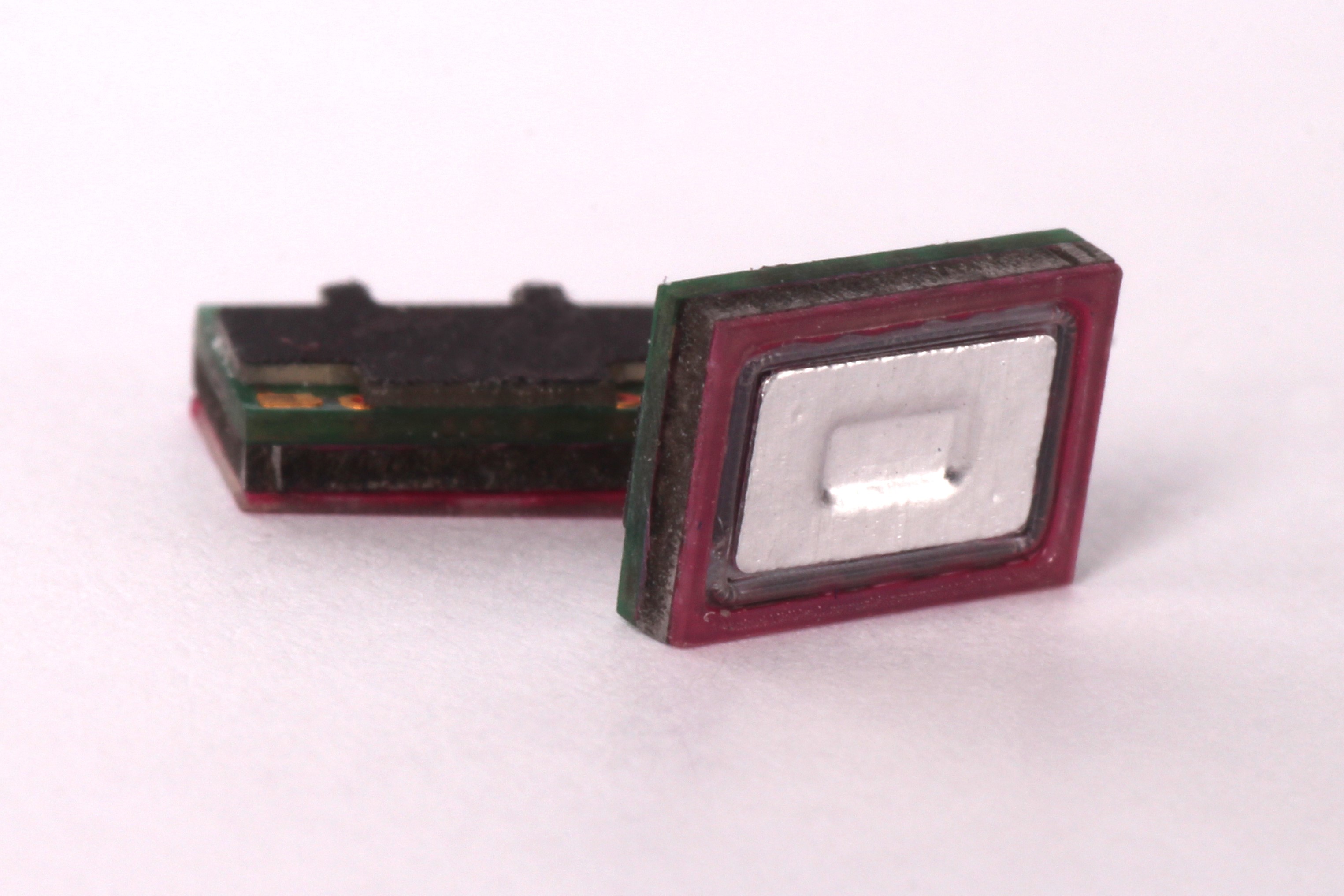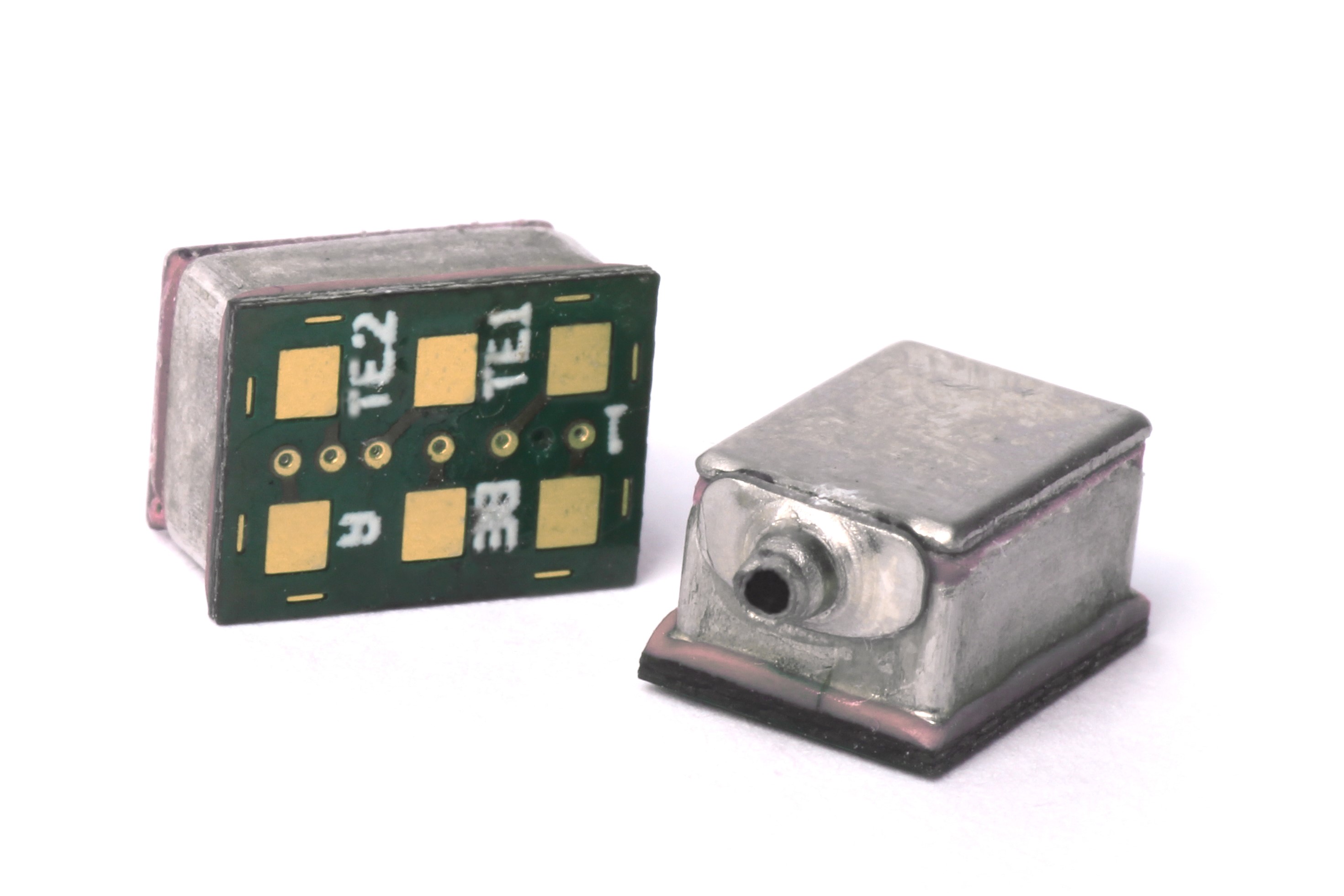Revolutionizing Smartphone Speakers
The World’s Thinnest Speaker
The first miniature speakers using MEMS technology are being unveiled, sized between two and twelve millimetres, depending on the model. Their size makes the new speakers a perfect choice for mobile devices like smartphones, tablet computers, or headphones.


In smartphones, tablets, and cameras – MEMS technology has become ubiquitous in our lives. The acronym stands for micro-electro-mechanical systems, tiny silicon processors with internal structures measuring only micrometres, that is, a millionth of a metre. Despite their astonishingly small scale, they are capable of processing both electronic and mechanical information. Used in accelerometers in fitness trackers, they count how many steps we are taking every day. As inclinometers, they make sure to flip the screen when we turn our smartphones sideways. However, one challenge had long proven too difficult to master: Making sound. Most regular speakers create sound waves by getting a membrane to vibrate as a result of a driver turning an electric impulse into physical movement with a coil and magnet. In essence, the technology has not changed since Werner von Siemens’ patent from 1877. It has its drawbacks: Coils and magnets need a lot of space and energy. The Austrian start-up USound wants to lift speaker technology into our modern age with the aid of MEMS technology. The success story of MEMS microphones that have become normal in smartphones encouraged USound to try the same for speakers. By next year, a new generation of semiconductor-based speakers will hit the market – promising to need only half the space of regular speakers and use 80 percent less power. The MEMS technology places all individual components very close to each other, which has the potential to save substantial amounts of energy and keep users from having to constantly recharge their batteries. One particular goal of USound: The new MEMS speakers are expected to sound even better than current models in the market.
This new world of speakers is made possible with the aid of Fraunhofer. The Fraunhofer Institute for Digital Media Technology IDMT contributes its expertise, following up on its past cooperation with USound on testing the acoustic quality of the speakers. Working with the Fraunhofer Institute for Silicone Technology ISIT, the IDMT is developing an audio signal amplifying technology for MEMS speakers in the Smart Speaker project. The IDMT has the opportunity to remain USound’s partner for the journey ahead. The Fraunhofer ISIT is also working on MEMS processors with high-performance drivers that use piezoelectric means to create sound, instead of the old electromagnetic technology. It works by coating movable silicon microstructures with a piezoelectric layer that turns electric energy into movement. When exposed to an alternating current, the MEMS chip vibrates and creates sound. The Fraunhofer Institute for Integrated Circuits IIS provided energy-efficient drive circuits which are capable of recovering energy from the MEMS chips. This complex, but effective system allows very low power to drive the new speakers. Cutting-edge integration technology keeps the intelligent drive circuit to a miniature size. The layout of the new generation of speakers was developed by the Fraunhofer Institute for Reliability and Microintegration IZM. David Schütze, researcher and project leader at the Fraunhofer IZM, explains the thinking behind the work: “Our goal was to develop a process for industrial-scale mass production”. The challenges began with the individual components of the new speaker technology. The system demands creative thinking and improvisation. At a size of a mere seven by two millimetres, these are the thinnest speakers in the world today. Minimal layers of adhesives, as thin as a human hair, are used to fit the individual components with absolute precision. Even tiny deviations could distort the resulting sound considerably and hurt the quality of the speakers’ output. The construction concept was five months in the making and is now being refined and brought into production by USound. Andrea Rusconi, co-founder of USound, looks back at the process: “The IZM has mastered the intricate technical challenges exceptionally well, with great results from the very first models”. USound is now preparing full-scale production of the first MEMS in-ear headphones and speakers, scheduled to hit the market in 2017. And if the forecasts by Lyon-based Yole Développement are to be believed, USound has picked a winner: The French market researchers predict the market for MEMS products to grow from USD 12 billion to 20 billion by the year 2021 (source: Yole Développement, 2016).
Last modified:
 Fraunhofer Institute for Reliability and Microintegration IZM
Fraunhofer Institute for Reliability and Microintegration IZM